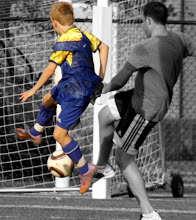I'm way behind on app reviews so now it's time to catch up - or
start to catch up anyway. We just returned from an eight day road trip with
seven planned stops along the way and I'd like to tell you about my favorite
travel apps. Of course I use a traditional map app for much of the travel and I
prefer Apple maps since it continues
to show the route even if you lose Internet service which we did on two
occasions. You can also use Google Maps or Waze for navigation and each has its own benefits.
Most of the following apps fall into my FuF category - free or under four dollars. I use them on my Apple devices so I can't guarantee they work on other platforms but certainly the most popular ones should.
• To start with there's one "must have" app if you do
much interstate travel - iExit. This easy to use app available on both Apple
and Android shows a scrolling view of upcoming freeway exits and the services
available there - hotels, restaurants and service stations including the price
of fuel at many of them. This makes it a snap to decide whether to stop at the next
exit or go a few miles further to one offering different services. We use it
frequently to find a hotel and it also shows rest stops for those of us who are always asking
"how many miles did it say to the rest stop?" No reason to take an exit if all you need is a rest stop.
• Before we left I used PinPoints
to plan the trip. You enter the stops in the order you want to visit them either with an address or by tapping on a map - maybe just a city name. The app will show a driving route and provide a list of stops with time and mileage from one to the next. It's easy to add, delete and rearrange stops and you can open any segment in the Maps app for navigation.
• I used BatchGeo
a web app (no download required) to store and display information about each of the stops along the way. You enter any information about each stop into a spreadsheet - name and address - along with other items you'd like to recall - phone numbers, confirmation numbers, etc. Then copy and paste this spreadsheet into the BatchGeo website and see a map with pins at each point. Click on one of the pins to see information from the spreadsheet.
Other travel related apps include
• OMG Transit
for bus schedules and
• FlightAware
for tracking flights (app and website) and
• MeasureMap
to outline map areas and calculate perimeter and area.
• Finally, CityMaps2go
let's you download maps to use if you don't have an Internet connection. GPS does not require Internet access to display your location on a screen. However, your location will just be a small dot in the middle of a blank screen unless you have a map coming from the Internet or preloaded in your device.
Most of the following apps fall into my FuF category - free or under four dollars. I use them on my Apple devices so I can't guarantee they work on other platforms but certainly the most popular ones should.
 |
| iExit travel app |
• Before we left I used PinPoints
to plan the trip. You enter the stops in the order you want to visit them either with an address or by tapping on a map - maybe just a city name. The app will show a driving route and provide a list of stops with time and mileage from one to the next. It's easy to add, delete and rearrange stops and you can open any segment in the Maps app for navigation.
• I used BatchGeo
a web app (no download required) to store and display information about each of the stops along the way. You enter any information about each stop into a spreadsheet - name and address - along with other items you'd like to recall - phone numbers, confirmation numbers, etc. Then copy and paste this spreadsheet into the BatchGeo website and see a map with pins at each point. Click on one of the pins to see information from the spreadsheet.
Other travel related apps include
• OMG Transit
for bus schedules and
• FlightAware
for tracking flights (app and website) and
• MeasureMap
to outline map areas and calculate perimeter and area.
• Finally, CityMaps2go
let's you download maps to use if you don't have an Internet connection. GPS does not require Internet access to display your location on a screen. However, your location will just be a small dot in the middle of a blank screen unless you have a map coming from the Internet or preloaded in your device.








